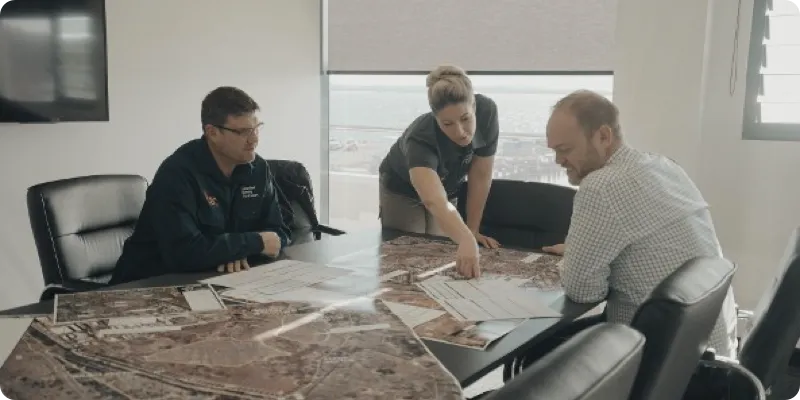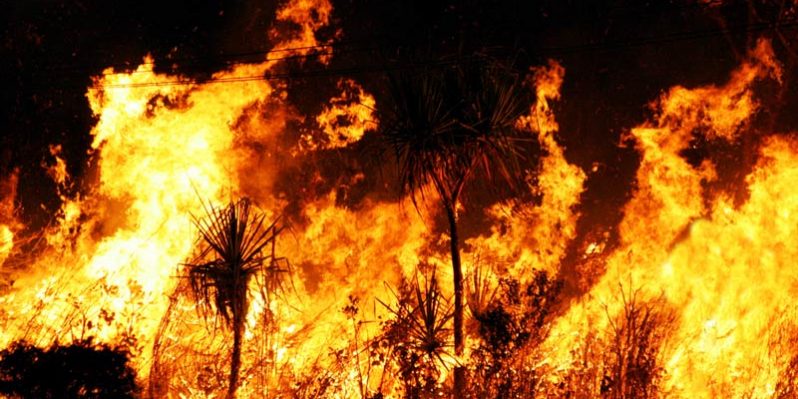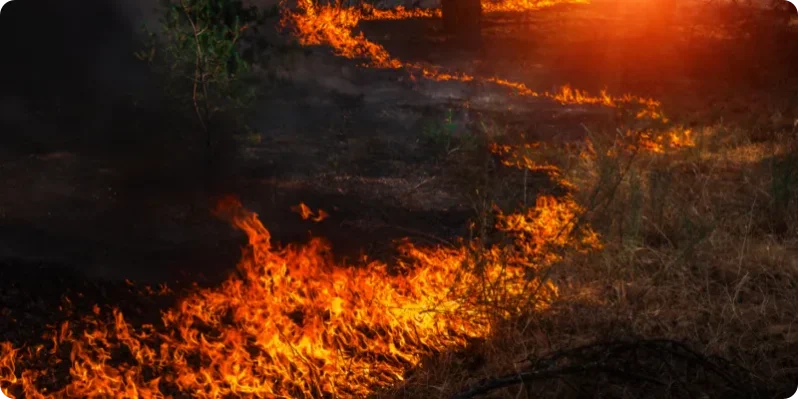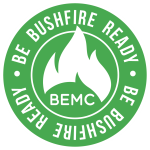
If your land is within a bushfire prone area, you will be required to obtain a bushfire assessment report to accompany your Development Application (DA). This is the principal document that assesses all aspects of design and construction in bushfire prone areas. BEMC are able to provide bushfire reports in Newcastle, Port Stephens, the Hunter Valley, the Mid North Coast and the Central Coast.
Our bushfire assessment reports satisfy the requirements within Appendix 1 of Planning for Bushfire Protection and with section 4.14 and 4.15 of the Environmental Planning & Assessment Act 1979 and where required s100B of the Rural Fires Regulation 2013. BEMC implements FPAA ‘Practise Notes’ and the various Australian Standards including AS3959 Construction of buildings in bushfire prone areas to provide industry best practices. The report is presented in a way that will assist the local council development assessment officer and the rural fire service to determine compliance and relevant the consent condition. We implement both Method 1 and Method 2 assessment pathways.
If you’d like to learn more about how we can assist, give our team a call on 0408 667 137 or contact us online to speak with a member from our friendly team today!

Your report will incorporate a site inspection and will include:

When planning a development, one of the issues that you will need to take into consideration is the level of bushfire risk the proposed development will face. There is a standard index that is used to measure bush fire risk, known as the Bushfire Attack Level. Properties are allocated a score, based on factors such as how close the property will be to vegetation, the type of vegetation, the gradient of the vegetation and the probability of a bush fire starting.
If the score of your BAL assessment (which needs to be carried out by a suitably experienced professional), is more than 40, the proposed development is deemed to be at high risk of being affected during a bush fire. In these circumstances, the proposed building would be deemed “non-compliant”. If the BAL score is below 40, the development will be deemed compliant and a Complying Development Certificate can be issued by the professional who completed your BAL assessment. This can then be submitted along with your other planning documentation.
When a proposed development is deemed “non-compliant”, it’s recommended that a Bush Fire Assessment Report is commissioned. The Bush Fire Assessment Report is created by a suitably qualified professional and gives details of what the main risks are to the development from bush fire and what measures can be taken to manage these risks. Management options may include using fire-proof materials or using specific safety measures when it comes to utility installations. The Assessment Report is submitted alongside the BAL report, providing planners with a clear picture of how bushfire risk is to be effectively managed.
If you’d like to learn more about Bushfire Assessment Reports or Bushfire Attack Level Certificates, give our team a call on 0408 667 137 or contact us online to speak with a member from our friendly team today!
Bushfire risk in Newcastle is not a one-size-fits-all scenario. From the coastal winds whipping through Stockton to the dry inland ridges near Wallsend, each area has its own bushfire behaviour triggers. When preparing a bushfire assessment report in Newcastle, assessors consider a wide array of location-specific elements:
Understanding these local factors helps your bushfire assessment report in Newcastle provide more than just a compliance checklist—it becomes an essential risk management document with real-world application.
We pride ourselves on delivering clear and concise documentation, but just as important as the end result is the process that goes into preparing each bushfire assessment report in Newcastle. Our methodology includes:
Each bushfire assessment report in Newcastle is crafted with precision, drawing on both the local knowledge of our team and the latest fire science standards.
With a long-standing presence in Newcastle and the greater Hunter Region, we have an in-depth understanding of local council planning protocols and Rural Fire Service expectations. This familiarity allows us to anticipate approval pathways, recommend locally approved materials and fast-track council feedback loops. Choosing BEMC for your bushfire assessment report in Newcastle means partnering with a team that’s already trusted by local developers, architects and town planners.
To get the most accurate bushfire assessment report, it helps to be prepared for the site inspection. Here’s how you can assist:
We’ll handle the technical analysis—your role is to make sure we have all the relevant details at our fingertips to make our recommendations as practical as possible.
If you’re planning a new build, subdivision, renovation or change of use in a bushfire-prone area, you’ll need more than just a checkbox exercise. You’ll need a thorough, professionally prepared bushfire assessment report that puts your project in the best possible position for approval and long-term resilience.
Our qualified team is here to guide you through every step, from initial site assessment through to DA lodgement support. Call us on 0408 667 137, or contact us online to arrange a free initial consultation. Let BEMC help you build safely, confidently and compliantly in bushfire-prone land across Newcastle and beyond.

All developments within bushfire prone lands require assessment. This includes occupied and non-occupied dwellings.
There are two principal pathways for residential developments – complying and non-complying developments. There are several factors that determine if your development is either complying or non-complying. The main factors are the distance, type of vegetation and slope of the bush that impacts on your property. A Preconstruction Constraints Assessment provides you with this information. A Bushfire Due Diligence Report goes a step further and provides you with the Bushfire Mitigation Measures requirements for the development to confirm with planning requirements.
Once you have determined if your development is complying or non-complying, you will ultimately require either a Complying Development Certificate for complying developments or a Bushfire Assessment Report for non-complying developments to be submitted to the consenting authority.
Both above assessments must be issued by an accredited bushfire consultant. There are a whole range of reasons why a CDC might not be able to be issued for the land. If this happens, you’ll require a Bushfire Assessment Report. In many cases, clients opt directly for the Bushfire Assessment Report to ensure all bushfire compliance, risks and mitigation are covered within the development process. Contact our team today if you want to learn more about how we can assist!
Before your Bushfire Assessment Report can be completed, you’ll need to provide a detailed Bushfire Attack Level assessment that details how the final BAL score was arrived at. This gives the professional completing the Bushfire Assessment Report the information they need to recommend preventative measures that are tailored to the specific risks the proposed development is exposed to.
The time taken includes the time for the assessor to complete the assessment on-site, as well as write up their findings in an approved format. On average, we take between two to four weeks to complete a comprehensive Bushfire Assessment Report.
The government has put together a searchable database that you can use to check if your development will be in a bushfire zone. Just enter the site details and you should be able to find out whether you’re developing in a bushfire zone or not.
There is no legal reason why you can’t do a BAL assessment yourself. That said, completing an assessment accurately is a rigorous technical exercise. You will need the right equipment to accurately measure gradient, distance and area. You will also need to accurately identify the vegetation surrounding your site. Importantly, you will need to be able to show exactly how you arrived at your score.
In most cases, you’ll get a far better result (that will stand an increased chance of being accepted by the development assessors) if you hire a professional to complete the work.
No. If you’re able to bring down the risk of the development through an appropriate choice of materials, building methods and other management strategies, you may still be able to complete your development in an area that’s at high risk of bushfires.
If your property does not meet the required bushfire protection standards, you may need to implement additional mitigation measures to enhance its resilience against bushfires. These measures can include modifying building designs, using specific construction materials, managing surrounding vegetation, or creating adequate defendable space. Failing to comply with these standards can result in delays or denial of development approvals, as authorities must ensure that new developments on bushfire-prone land conform with the guidelines set out in Planning for Bush Fire Protection (PBP) 2019.
Yes, if your property is located in a bushfire-prone area, a bushfire assessment is typically required for renovations, especially if they involve significant alterations or additions. This assessment ensures that any new work complies with current bushfire safety standards and does not increase the property’s vulnerability to bushfires. It’s essential to consult with your local council or a qualified bushfire consultant to determine the specific requirements for your renovation project.
A bushfire assessment evaluates several factors to determine the level of bushfire risk to a property. Key considerations include the classification and proximity of surrounding vegetation, as different types pose varying levels of bushfire threat; the slope of the land, which influences fire behaviour, with fires moving faster uphill; local weather patterns, such as prevailing winds and temperature, which affect bushfire risk; and the construction standards and materials used, which can impact a building’s vulnerability to bushfire. These factors contribute to determining the Bushfire Attack Level (BAL), which guides the necessary construction standards to improve bushfire resilience.

BPAD Accredited
FPA Bronze Member
BPAD Accredited
FPA Bronze Member